
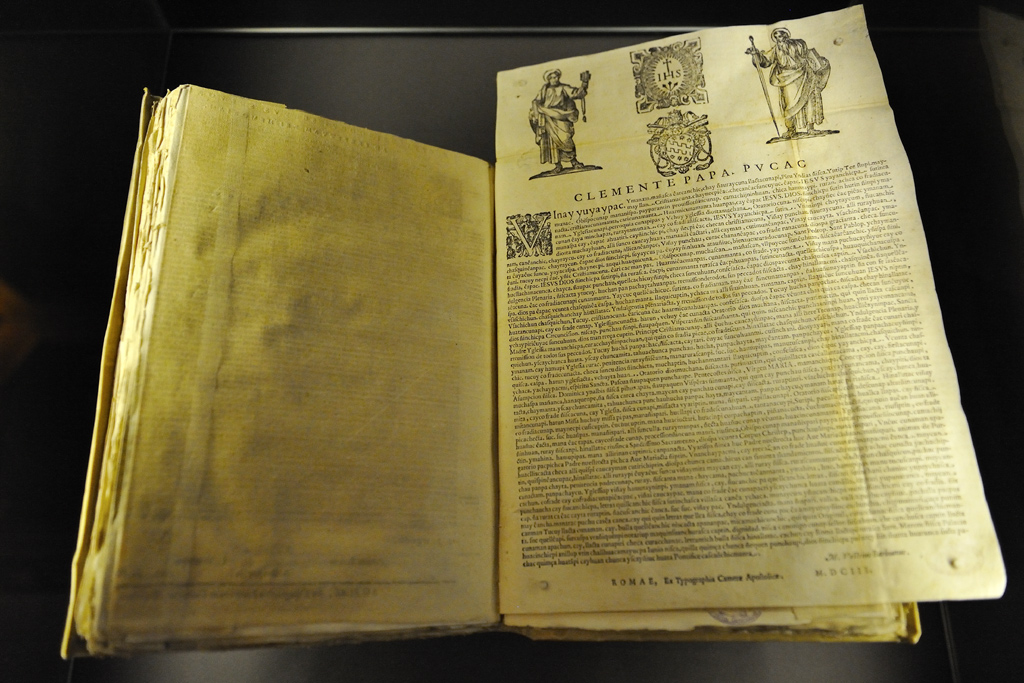
|
This
document from the year 1603 is the only known papal document in the
language of the Incas, Quechua. Pope Clemens VIII recognized the
brotherhood Nombre de Jesús, which was established about 20
years ago by the mestizo Blas Valera in Cuzco. Because of the
missionary activity most of the remaining descendants of the Inca
nobility converted to Catholicism and together joined the fraternity!
Naturally, one could question, why these proud men would convert to
some other faith. King Karl V
himself instructed his soldiers, needless to say, too late, to stop
with the murders. This is however, not the subject of this documentary.
|
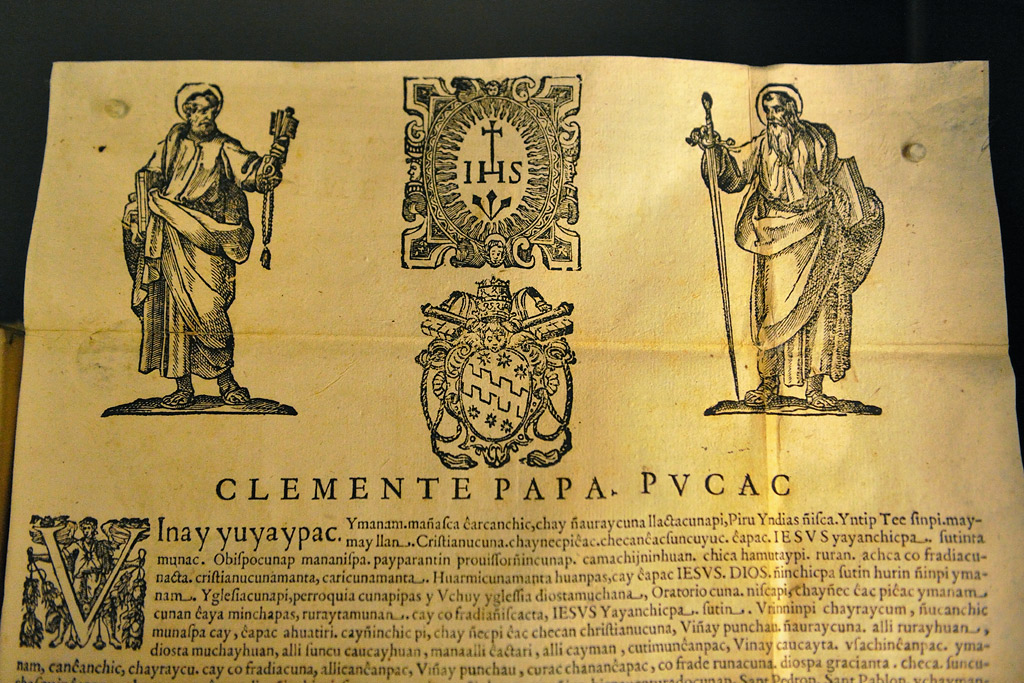
|
The messenger of this request for recognition, the Spanish Jesuit Diego de Torres Bollo,
was able to convince Clemens VIII to convey the commendation that he
had himself translated, for the sake of respect (!) in Quechua.
|
|
Francesco wanted, from his early days, to help the needy using the wares from his parents’ store. Well fine,
thought his father, with whom he had got into trouble. In the year
1208, after a legal battle with his father, Francesco renounced his
heritage and began to live as a hermit outside the city walls of
Assisi. He cared for lepers and often prayed in the famous Portiuncula Chapel.
|
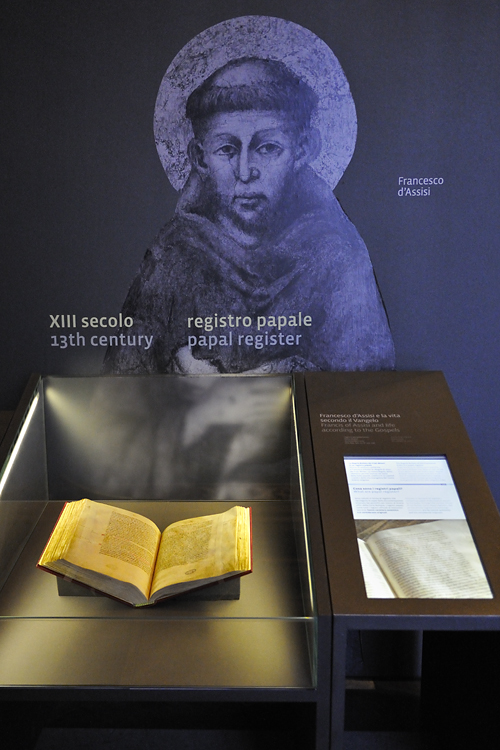
|
He
took the following quote from St. Mathew’s Gospel, which he had
heard there, as a call to live like the twelve Apostles, namely in
poverty and proclamation of the Gospel (also called as apostolic life or Lat., vita apostolica).
"But go and preach (…) You have received freely, give back freely as well.
You shall have neither gold, nor silver not brass in your pursues, also no travel bags, also no two shirts, no shoes and also no sticks." (Mt 10, 8-10) He now dressed in a simple robe, which was held by a rope. He refused all possessions, and also strictly any contact with money and travelled everywhere barefoot. In the year 1209, he requested Pope Innocent III for official confirmation of the lifestyle of his meanwhile small community. The first version of the rules of the Order ('regula primitiva') that was furnished has unfortunately been lost. After some back and forth, in the year 1223, the newly established Rules of the Order of Francis of Assisi, as illustrated here, were confirmed through the Bull solet annuere by Pope Onorius III. The book contains 12 chapters of the basic rules of apostolic life, just how Francis of Assisi had envisaged. It is valued today as the act of the official initiation of the Franciscan movement. |
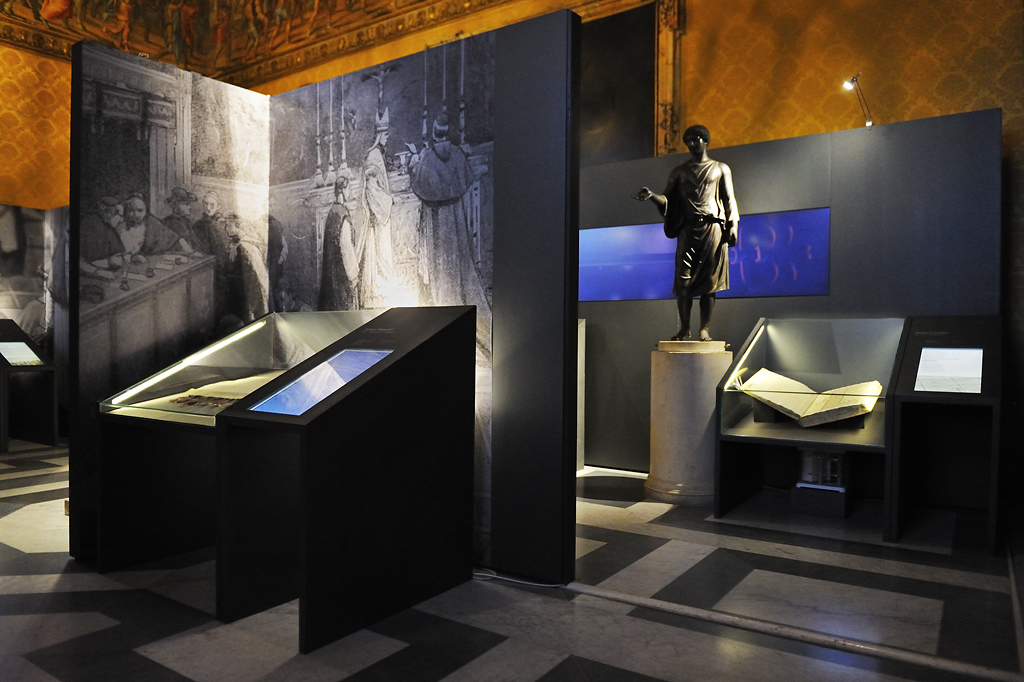
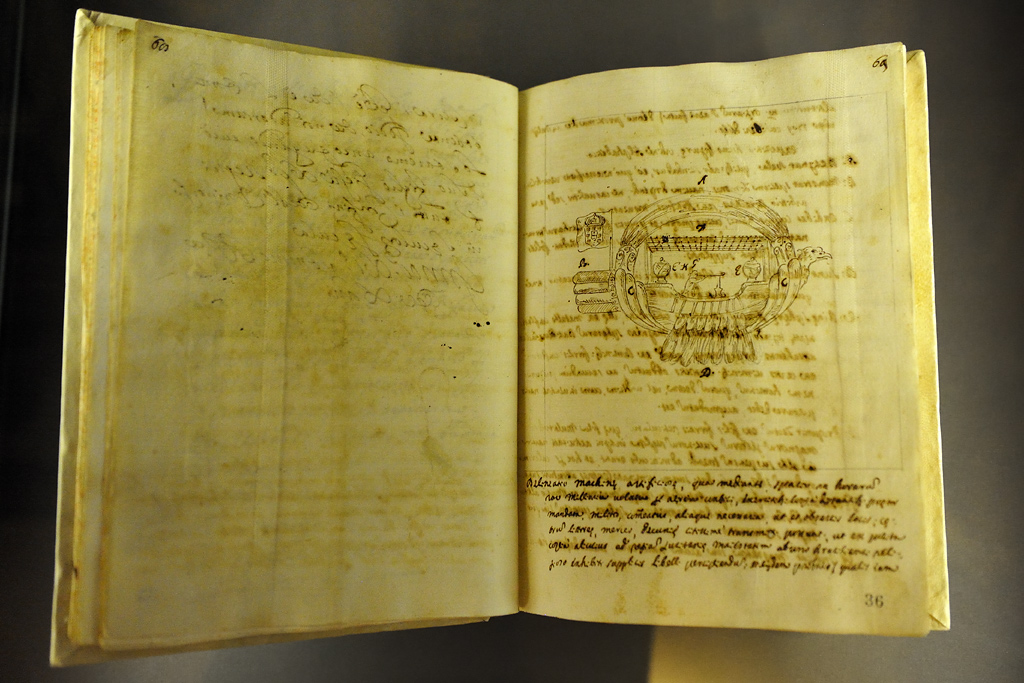
| Gusmão was a Jesuit priest, scientist and inventor from the then Portuguese colony of Brazil. In 1709, he developed a prototype of an airship and as padre voador (Port: flying Priest), he was ranked as the pioneer of air travel. In the same year, he received his Patent for his Machine, in a ship travelling through air, a type of a balloon or better known as airship, passarola. |
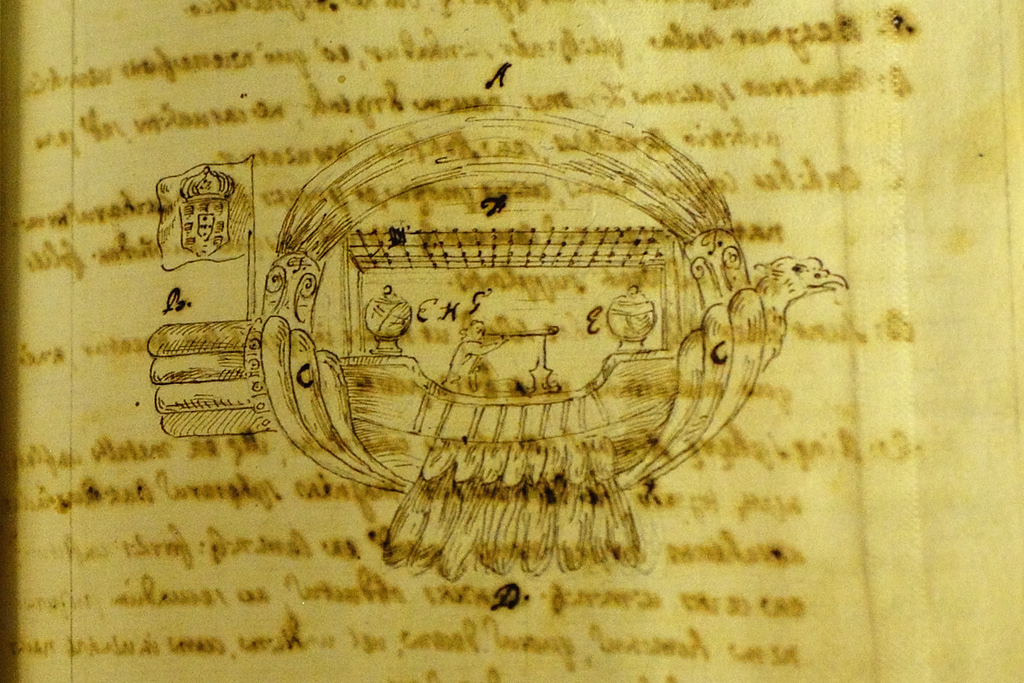
| It
could never be clarified what the underlying principle of the lifting
force was. The functionality and appearance of his flying apparatus are
even today disputed. According to the available descriptions and
records, the balloon has been designed like a ship that resembles a
bird. This is depicted in the illustration, which comes from the patent
application from 1709. The visible globes (arcanum attractionis continentes - consisting of the secret of the attraction) according to the words of Gusmão are enclosed with magnets ("magnetes sunt inclusi"). The illustrated flying instrument should have held, according to the patent application, 10-11 persons. In addition Gusmão organized in 1709 in the presence of witnesses, successful unmanned flight tests with takeoff, flight and landing, of uncontrolled hot air balloons. Today, the airport of the Brazilian city Araraquara is named after him. |
| After the capture of Peking and the Imperial throne by the Ts'ing Dynasty in 1644, the overthrown Ming emperor moved back to Nang-King. In 1647, his successor relocated the seat of the government of the southern Chinese kingdom to the Koang-toung province. The wife of the last emperor Young-ly, Ningsentseso converted to the Catholic faith. She received through Baptism, the name of Helena and for her son, Konstantin. |
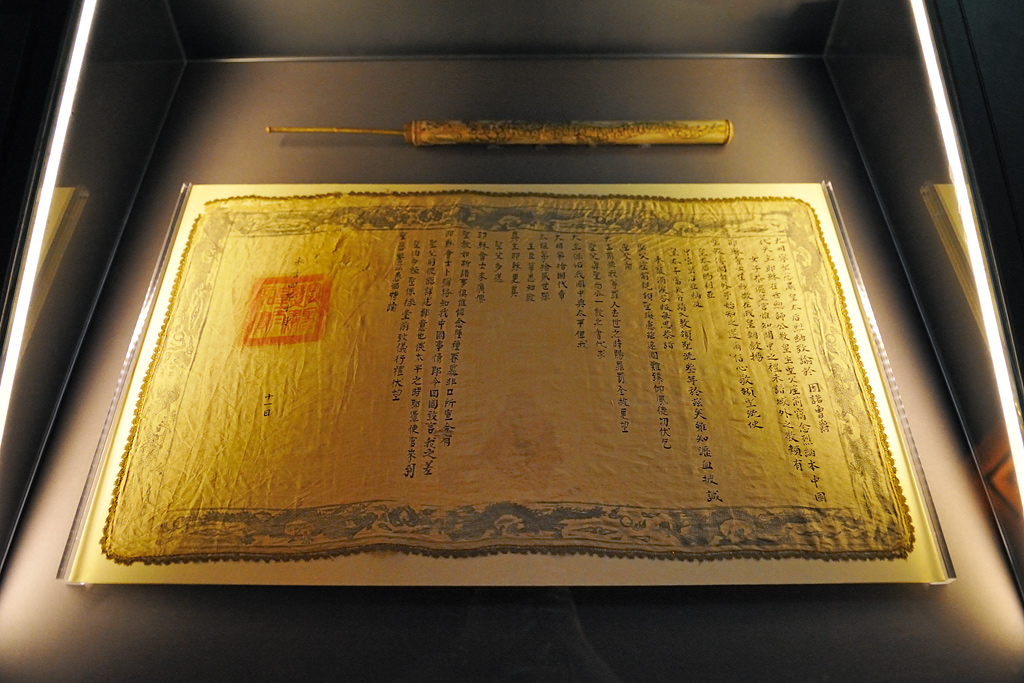
| In
the year 1650, the Empress sent a written letter on silk encased in a
bamboo roll to Pope Innocent X. In it she reported that impressed by
the work of the Jesuits, she had converted to Catholicism. She
requested the Pope to send more missionaries to her kingdom and wanted
to herself send a representative to the Holy See, once peace was
resorted in her motherland. The letter from the Empress did not reach Innocent X, as he died shortly before. It was received and answered by his successor Alexander VII. In the letter from December 18, 1655 the Pope addressed Helena as the rightful ruler (Helena Tamingue Sinarum Regina), expressed his joy over her conversion and gave her and her imperial family papal blessings. But the letter did not reach the Empress till after she died. |
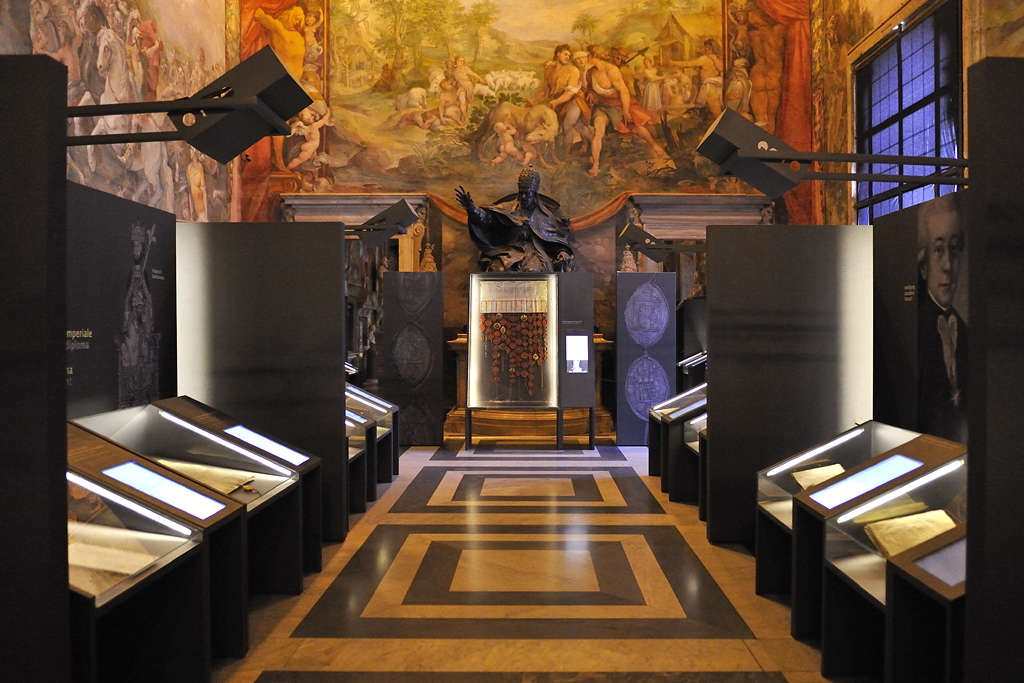
| The Roman rota (rota romana, today: The apostolic court of the Roman rota) is the orderly court of appeals and the second highest court of the roman-catholic world church. It exercises for the Popes, orderly jurisdiction. The rota has its office in Rome in the Pallazo della Cancelleria (in close proximity to the Campo di Fiori). The word rota is of unknown origin and appeared for the first time in the year 1336. |
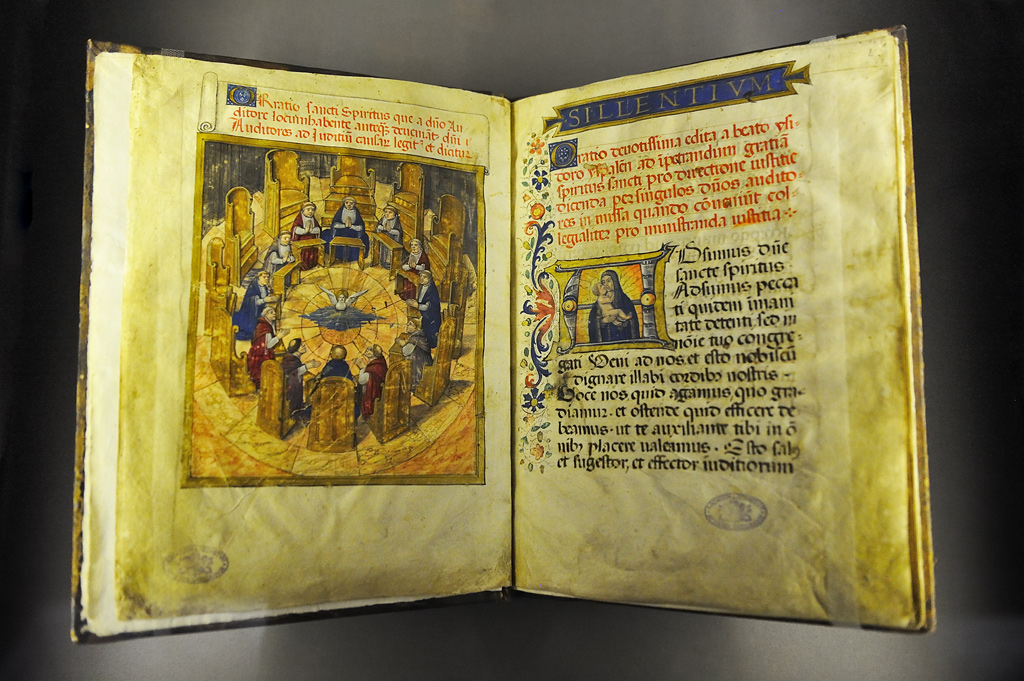
| The Rota Romana
is responsible for the procedures, which were earlier decided in the
first or second instance, in subordinate courts. However, in some areas
the Roman rota has full authority in the first instance, for example, in fights on Bishops and higher Abbots. In the exhibited book, the sworn oaths of all judges till the year 1690 can be found. The miniature shows the judges kneeling and praying at the judges’ table. In the middle is a dove, a symbol of the Holy Spirit. Offered here is the prayer Adsumus, which is till today recited in the Roman Curia before some gatherings. |